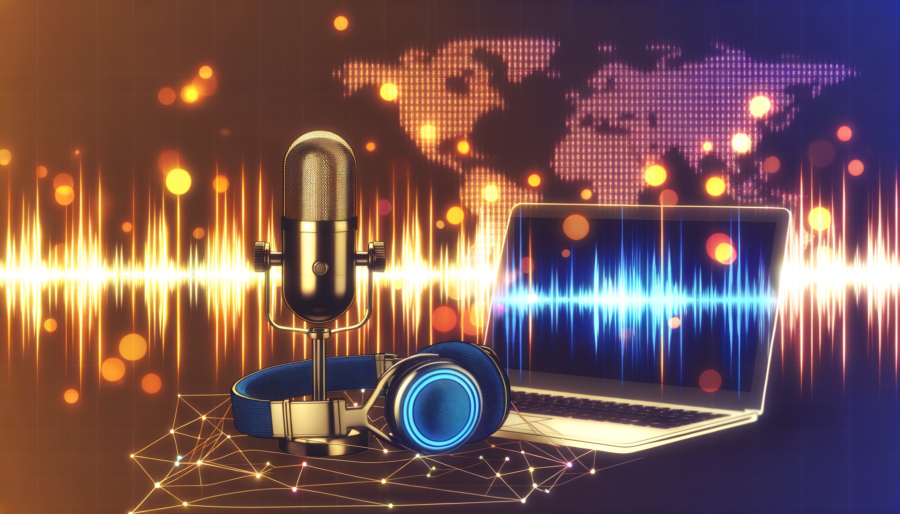How to Record a Podcast Remotely Like a Pro
Welcome to the wonderful world of remote podcast recording! In today’s digital age, conducting high-quality remote interviews can set your podcast apart and attract more listeners. Whether you’re connecting with a guest across town or across the globe, capturing crystal-clear audio is essential for podcast success. In this article, you’ll learn all about remote podcast recording, including the best software options, essential gear, and advanced strategies to elevate your audio game. Get ready to dive into remote recording mastery through insightful tips and comparisons such as Riverside.fm vs Squadcast, best remote podcasting gear, syncing audio, and much more!
Understanding Remote Podcast Recording
Recording podcasts remotely is all about breaking down geographical barriers to connect with diverse voices and stories. The benefits include increased flexibility in scheduling, access to a wider range of talent, and potentially more dynamic content. However, remote recording comes with its own set of challenges such as maintaining sound quality, managing time zone differences, and ensuring reliable internet connections. Choosing the right tools and techniques is crucial to overcoming these hurdles and ensuring your podcast sounds as professional as possible.
Choosing the Best Remote Recording Software
Let’s dig into some of the top contenders in remote recording software. A head-to-head between Riverside.fm and Squadcast shows each has its own unique strengths. Riverside.fm impresses with its high-quality audio and video recording capabilities, including separate track recording for each participant. Squadcast, on the other hand, excels in user-friendly interface and seamless integration with editing platforms.
Other solid options include Zoom for those already familiar with the platform, offering decent audio quality with basic recording features, and Cleanfeed which is renowned for its no-frills, easy-to-use interface that focuses solely on delivering high-quality audio.
When choosing software, consider multi-track podcast recording capabilities, as it provides more flexibility in editing and post-production. The choice ultimately depends on your podcasting style, budget, and technical needs—a bit of trial and error may be required to find your perfect match.
Essential Gear for Remote Podcasting
The right gear will ensure your podcast sounds as fabulous as it could from any location. Invest in a good quality microphone, such as a USB or XLR model, and noise-cancelling headphones to enhance audio clarity. A stable and robust internet connection is a must to avoid dreaded audio dropouts. Additionally, consider backup power sources or redundancy systems to prevent unexpected interruptions.
Selecting equipment that fits your budget and technical comfort is key—sometimes a simple, reliable setup beats a complex one that complicates recording sessions.
Recording High-Quality Remote Interviews
To master recording high-quality remote interviews, focus on syncing remote podcast audio effectively. Use platforms with built-in latency-fixing technology and listen carefully for any delays during your calls. Work to preemptively avoid internet lag in podcasts by requesting recordings in HD and using cable over Wi-Fi when possible.
Conducting remote interviews also requires maintaining professionalism. Engage your guests with comprehensive pre-interview setups and clear communication to create an environment where great conversations flourish.
Post-Recording Workflow and Processing
Once the recording wraps, editing and post-production take center stage to polish your episodes. You’ll need reliable software for cutting, mixing, and enhancing your podcast’s sound. Address technical glitches early through editing, and if necessary, re-record segments to ensure the episode is seamless to your audience.
Advanced Tips for Remote Podcast Recording
To take your podcasting skills to the next level, explore advanced software settings to maximize audio clarity. Consider DIY soundproofing solutions, such as hanging blankets or using foam panels, to absorb unwanted noise. When facing common problems like latency or dropouts, innovative solutions—like pre-recording backup audio—can keep your project on track.
Conclusion
We covered a ton! From selecting the right software and gear to syncing audio and perfecting post-production, each step plays a critical role in creating professional and riveting podcasts. Don’t shy away from experimenting with various setups to discover what best suits your podcasting needs. The effort you invest in mastering remote podcast recording can truly elevate the quality and appeal of your show.





